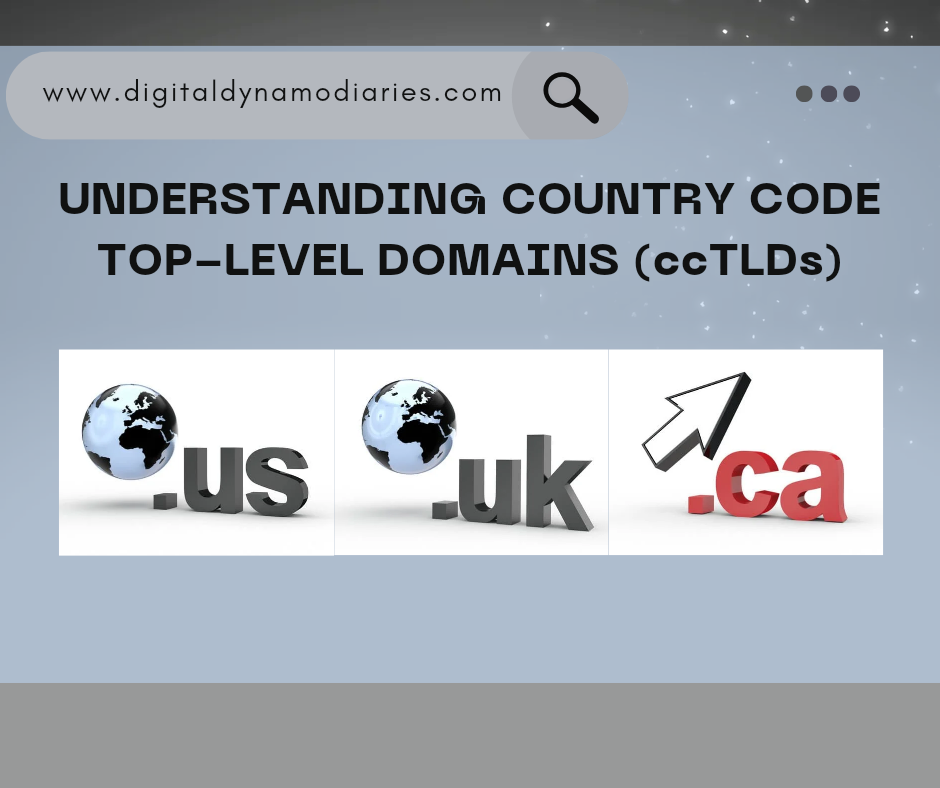Understanding Country Code Top-Level Domains (ccTLDs)
In today’s interconnected digital world, a website’s domain name serves as its primary identifier, akin to a physical address in the real world. Among the various types of domain names, country code top-level domains (ccTLDs) play a significant role. This article will delve deeply into the concept of ccTLDs, explaining what they are, why they matter, and how they can influence your online presence. By the end of this comprehensive guide, you will have a thorough understanding of ccTLDs and how to leverage them effectively for your business or personal website’s local SEO.
What Are Country Code Top-Level Domains (ccTLDs)?
Country code top-level domains, abbreviated as ccTLDs, are internet domain extensions that are specifically assigned to individual countries, sovereign states, or dependent territories. These domain extensions consist of two letters and are defined by the ISO 3166-1 alpha-2 standard. For example:
– ‘.us‘ represents the United States
– ‘.uk‘ represents the United Kingdom
– ‘.jp‘ represents Japan
The Internet Assigned Numbers Authority (IANA) is responsible for managing these domain names as part of the broader Domain Name System (DNS). Each ccTLD is operated by a designated national registry which handles the policies and procedures for registration and management.
The Importance of Country Code Top-Level Domains (ccTLDs)
ccTLDs offer several distinct advantages that make them valuable for businesses and individuals:
1. Geographical Identification
– Local Presence: ccTLDs provide an immediate signal to users about the geographical location or target market of the website. A `.ca` domain indicates that the site is Canadian, likely offering content relevant to Canadian users.
– Cultural Relevance: Websites using a ccTLD often align their content and services with local culture, making them more appealing to regional audiences.
2. SEO and Local Search Benefits
– Local SEO: Search engines like Google prioritize local results to improve user experience. A website with a ccTLD is more likely to appear in local search results, enhancing its visibility among the target audience.
– Search Engine Algorithms: ccTLDs help search engines understand the geographical focus of a website, which can lead to better indexing and ranking in local searches.
3. Trust and Credibility
– User Trust: Users tend to trust websites with local ccTLDs more than generic ones. A local domain suggests that the site adheres to regional standards and practices.
– Brand Loyalty: For businesses, using a ccTLD can foster greater trust and loyalty among local customers, who may prefer to engage with a company that appears to be rooted in their own country.
4. Regulatory Compliance
– Legal Requirements: Some countries require businesses operating within their borders to use a local domain. A ccTLD can signal compliance with these regulations, making it easier to establish a legal and trustworthy presence.
How to Choose the Right Country Code Top-Level Domains (ccTLDs)
Choosing the right ccTLD is a strategic decision that involves several key considerations:
1. Target Audience
– Market Focus: Determine where your primary audience is located. If your business primarily serves customers in a specific country, a ccTLD for that country can be highly beneficial.
– Language and Culture: Consider the language and cultural nuances of your target market. A ccTLD can help tailor your website to meet these local preferences.
2. Business Goals
– Expansion Plans: If you plan to expand your business internationally, you might start with a generic TLD (gTLD) like `.com` and add ccTLDs for specific countries as your business grows.
– Brand Strategy: Ensure that your domain strategy aligns with your overall brand strategy. A ccTLD should complement and enhance your brand’s global identity.
3. Branding
– Memorability: Choose a ccTLD that is easy to remember and resonates with your brand. A well-chosen domain name can reinforce brand recognition and recall.
– Consistency: Maintain consistent branding across all domains to ensure a unified global presence.
4. Legal Requirements
– Local Regulations: Research any legal or regulatory requirements for using a ccTLD in your target region. Some countries have specific criteria for domain registration.
Managing Multiple Country Code Top-Level Domains (ccTLDs)
For businesses with a global presence, managing multiple ccTLDs can be a strategic advantage but also requires careful management:
1. Consistent Branding
– Unified Identity: Ensure that all your websites under different ccTLDs maintain a consistent brand identity. This includes logos, color schemes, and messaging to provide a seamless user experience.
2. Localized Content
– Tailored Content: Adapt your content to suit the linguistic and cultural preferences of each region. This might involve translating content, adjusting product offerings, and customizing marketing campaigns.
– Engagement: Engaging with local audiences through region-specific content can significantly enhance user engagement and loyalty.
3. SEO Strategies
– Local Keywords: Optimize each ccTLD for local search terms and keywords relevant to the region. This can improve search engine rankings and drive more organic traffic.
– Local Backlinks: Build backlinks from local websites and directories to boost the authority and relevance of each ccTLD.
4. Technical Considerations
– Geotargeting: Use tools like Google Search Console to set the geotargeting preferences for each ccTLD. This informs search engines about the intended audience for each domain.
– Performance: Ensure that your website infrastructure can handle multiple domains without compromising performance. Consider using a content delivery network (CDN) to improve site speed and reliability across different regions.
Challenges of Using Country Code Top-Level Domains (ccTLDs)
While ccTLDs offer many benefits, they also come with specific challenges:
1. Registration Restrictions
– Eligibility: Some countries have strict rules about who can register their ccTLDs. For example, France requires registrants of `.fr` domains to have a presence in the European Union.
– Documentation: You may need to provide documentation, such as proof of residency or business registration, to register certain ccTLDs.
2. Management Complexity
– Resource Intensive: Managing multiple domains can be resource-intensive, requiring dedicated personnel or services to handle the technical, administrative, and marketing aspects.
– Coordination: Effective coordination is necessary to maintain consistency and coherence across different domains.
3. Brand Dilution
– Consistency: If not managed carefully, using multiple ccTLDs can lead to inconsistent branding and messaging. This can confuse customers and dilute your brand’s overall identity.
– Strategy: Develop a clear strategy for each ccTLD to ensure that it aligns with your global brand while catering to local preferences.
Conclusion
Country code top-level domains (ccTLDs) are powerful tools for establishing a localized online presence. They enhance credibility, improve local SEO, and help comply with regional regulations. However, choosing and managing ccTLDs requires careful planning and strategic execution. By understanding the benefits and challenges, you can leverage ccTLDs to effectively reach your target audience and grow your global presence.
As the digital landscape continues to evolve, staying informed about domain strategies will keep your business competitive and connected with audiences worldwide. Whether you are a local business looking to strengthen your regional presence or a global enterprise aiming to expand into new markets, ccTLDs can play a crucial role in your online success.



